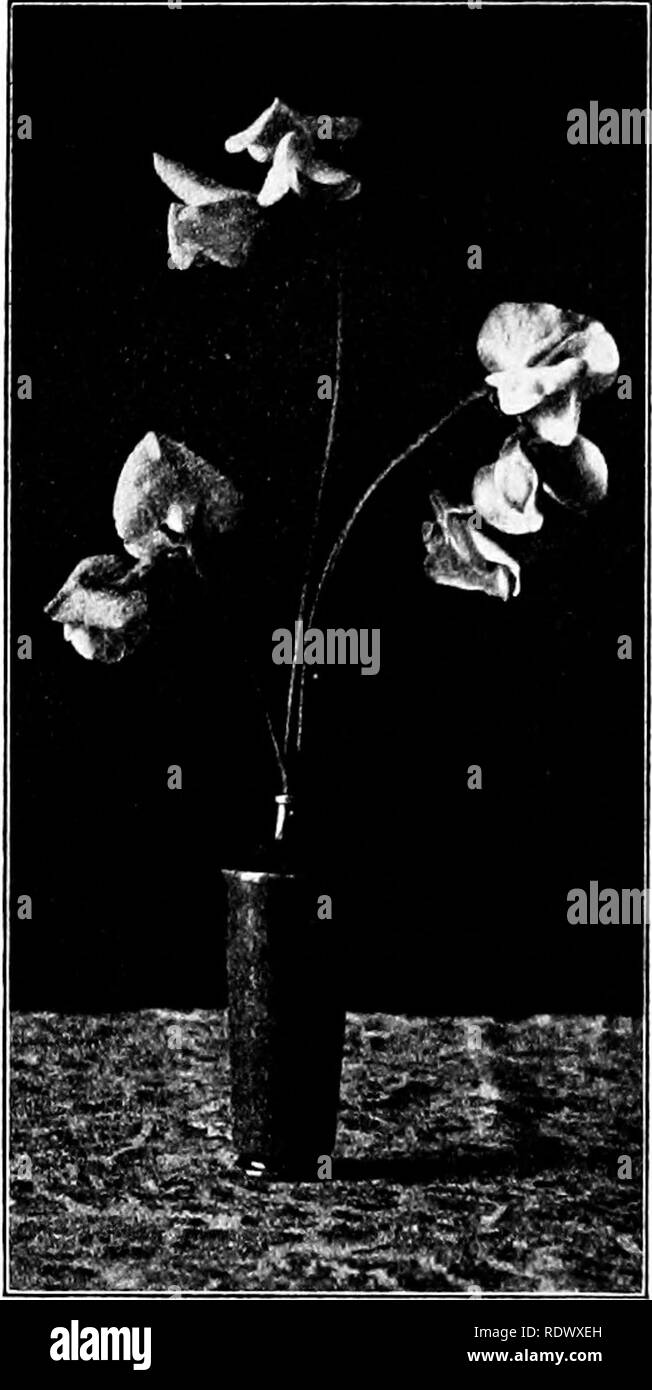. The school garden book. School gardens. 214 THE SCHOOL GARDEN BOOK and the small lower one is the keel. Within the keel are found the stamens, which develop the yellow pollen, and the pistil which matures later into the seed pod. In the small-flowered wild sweet pea from which our modern varieties ha^'e been devel- oped, this whole complicated structure of the flower has reference to the attraction of insects for carrying the pollen from blossom to blossom. The bright petals, especially the upright standard, attract the bee, which alights astride the wings, thus depressing both wings and kee

Image details
Contributor:
The Book Worm / Alamy Stock PhotoImage ID:
RDWXEHFile size:
7.1 MB (214.2 KB Compressed download)Releases:
Model - no | Property - noDo I need a release?Dimensions:
1120 x 2231 px | 19 x 37.8 cm | 7.5 x 14.9 inches | 150dpiMore information:
This image is a public domain image, which means either that copyright has expired in the image or the copyright holder has waived their copyright. Alamy charges you a fee for access to the high resolution copy of the image.
This image could have imperfections as it’s either historical or reportage.
. The school garden book. School gardens. 214 THE SCHOOL GARDEN BOOK and the small lower one is the keel. Within the keel are found the stamens, which develop the yellow pollen, and the pistil which matures later into the seed pod. In the small-flowered wild sweet pea from which our modern varieties ha^'e been devel- oped, this whole complicated structure of the flower has reference to the attraction of insects for carrying the pollen from blossom to blossom. The bright petals, especially the upright standard, attract the bee, which alights astride the wings, thus depressing both wings and keel until the end of the pistil comes in con- tact with the under surface of the bee. In the meantime, the tongue of the bee has been inserted into the base of the flower, from which it sucks the nectar, and then flies to another blossom, car- rying pollen with it. If you will watch 3-our sweet pea flowers a short time on a bright day, you will see, however, that the bees seldom alight astride the keel of our modern varieties when they visit the flowers. The blossoms are so large that the bees can alight on one of the wings and get the nectar without coming in contact with the pollen at all. Consequently, it. Typical Forms of Hooded Sweet Peas.. Please note that these images are extracted from scanned page images that may have been digitally enhanced for readability - coloration and appearance of these illustrations may not perfectly resemble the original work.. Weed, Clarence Moores, 1864-1947; Emerson, Philip, 1865-. New York, C. Scribner's Sons